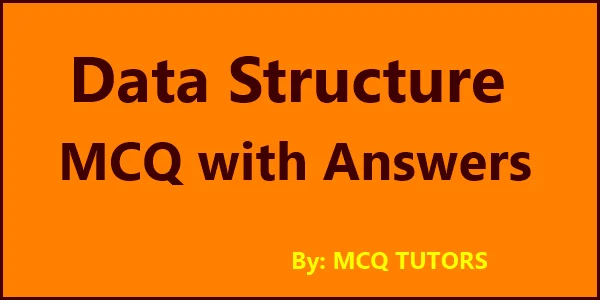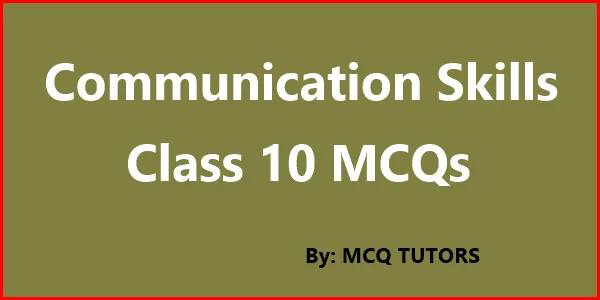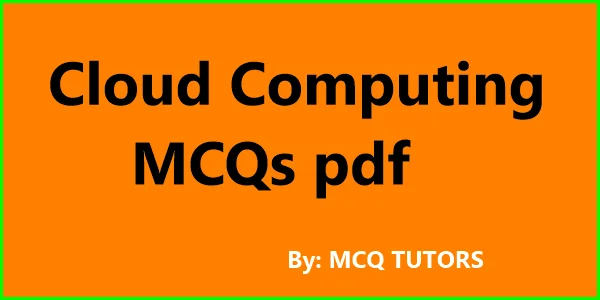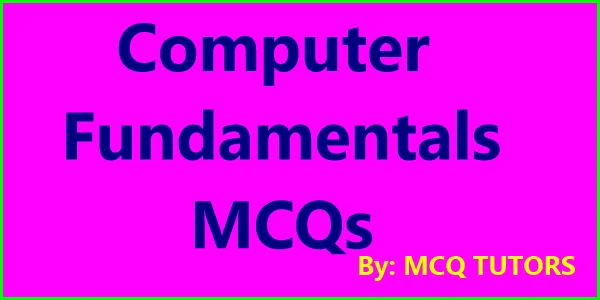Data Communication and Networking MCQ with Answers pdf | MCQ on Data Communication for the preparation of IT examinations.
Data communication and networking are essential topics for anyone studying computer science, as well as professionals in the IT field, so it is important to have an understanding of these concepts.
Data Communication and Networking MCQ with Answers
1. Communication System is a system or facility capable of providing ___ transfer between persons or types of equipment.
A) Digit
B) Bytes
C) Error
D) Information
Ans: D
2. ATM stands for ___.
A) Asynchronous transfer mode
B) Asynchronous transmit mode
C) Asynchronous travel mode
D) None of the above
Ans: A
3. In the sciences and engineering, the process of decomposing a function into simpler pieces is often called ___.
A) Fourier analysis
B) Fourier coefficients
C) Laplace analysis
D) Z- transformation
Ans: A
4. In the modulation process a high-frequency periodic waveform is called the ___.
A) Modulating signal
B) Carrier signal
C) Information signal
D) Data signal
Ans: B
5. The basic principle used in optical fiber is ___.
A) Reflection
B) Refraction
C) Bending
D) Total internal reflection
Ans: D
6. Frequencies in the range of about 1 GHz to 40 GHz are referred to as ___.
A) Carrier frequencies
B) Medium frequencies
C) Microwave frequencies
D) None of the above
Ans: C
7. ___ is an example of ground wave propagation.
A) Computer
B) AM radio
C) FM radio
D) Telephone
Ans: B
8. In ___ signaling, one logic state is represented by a positive voltage level, and the other by a negative voltage level.
A) NRZ
B) HDB3
C) Polar
D) Manchester
Ans: C
9. QAM stands for ___
A) Quadrature Angle Modulation
B) Quadrature Amplitude Method
C) Quadrature Angle Measure
D) Quadrature Amplitude Modulation
Ans: D
10. In delta modulation, the transmitted data is reduced to a ___data stream.
A) 1 bit
B) 2 bits
C) 3 bits
D) 8 bits
Ans: A
11. ___ defines Media Access Control (MAC) and Physical (PHY) layers specifications for wireless LANs.
A) IEEE 802.6.
B) IEEE 802.41
C) IEEE 802.22
D) IEEE 802.11
Ans: D
12. Peak attenuation occurs in the vicinity of ___ GHz due to water vapor and at frequencies below ___ GHz, the attenuation is less.
A) 22, 15
B) 24, 68
C) 10, 28
D) 60,100
Ans: A
13. Some operations performed by the receiver are:
i. Amplification of signal
ii. Demodulation
iii. Decoding
iv. Modulation
A) i, ii
B) i, ii and iii
C) ii and iv
D) i, iii and iv
Ans: B
14. ___and ___ forms of angle modulation.
A) Amplitude Modulation, Phase Modulation
B) Frequency Modulation, Phase Modulation
C) Amplitude Modulation, Frequency Modulation
D) Frequency Modulation, Pulse Code Modulation
Ans: B
15. Which of the following statements are correct?
i. In a burst error, only one bit is changed.
ii. Burst error means 2 or more bits in the data unit have changed from 1 to 0 or from 0 to 1.
iii. In error detection, we are interested only to see if any error has occurred or not, but we are not even concerned about the number of errors.
iv. CRC stands for cyclic redundancy chart.
A) i and ii
B) ii and iv
C) ii and iii
D) i, ii and iv
Ans: C
16. State True (T) or False (F)
i. Two key characteristics of the decision are the time and place that the decision is made.
ii. The term decision place refers to which node or nodes in the network are responsible for the routing decision.
A) i-T, ii-F
B) i-F, ii-F
C) i-T, ii-T
D) i-F, ii-T
Ans: C
17. Match the following
a) Thick coax i. Office cabling
b) Thin coax ii. Ethernets
c) CAT5 cable iii. Guided transmission medium
d) Twisted pair iv. High speed computer communication
A) a-iii, b-i, c-iv, d-ii
B) a-ii, b-i, c-iv, d-iii
C) a-iii, b-i, c-ii ,d-iv
D) a-i, b-iii, c-iv, d-ii
Ans: B
18. State whether the following statements are True (T) or False (F)
a. Spread Spectrum uses wideband, noise-like signals.
b. Spread spectrum signals are harder to jam (interfere with) than broadband signals.
c. Spread and narrowband signals can occupy the same band, with little or no interference.
d. The carrier of the direct-sequence radio stays at a variable frequency.
A) a-T, b-F, c-T, d-F
B) a-F, b-F, c-T, d-F
C) a-F, b-T, c-F, d-T
D) a-T, b-T, c-F, d-F
Ans: A
19. Which of the following are the key elements of a LAN?
i. Topology
ii. Transmission medium
iii. Wiring layout
iv. Medium access control
v. Modulation technique
vi. Repeater
A) i and iii only
B) ii and v only
C) i ,iii and iv only
D) i, ii, iii and iv only
Ans: D
20. ___ is concerned with ensuring that all frames are eventually delivered and possibly in order to a destination as they are sent from the source.
Ans. Error control
21. Stop and wait is a Full-duplex link protocol (True/False)
Ans. False
22. In Stop-and-Wait Automatic Repeat Request protocol adds a ___ to the stop-and-wait protocol.
Ans. The simple error control mechanism
23. In Stop-and-Wait Automatic Repeat Request ACK frame can also be corrupted and lost, it too needs ___ bits and a sequence number.
Ans. Redundancy
24. For m bits for the sequence number In Sliding window protocol the maximum size of the window is ___.
Ans. 2m – 1
25. The selective repeat protocol also uses two windows they are ___ window and the ___ window.
Ans. Send, receive
26. In Selective Repeat protocol, ___ is sent when data are delivered to the network layer.
Ans. ACK
27. State True (T) or False (F) and pick the right option.
i. Simplest protocol is a unidirectional protocol ii. In the Simplest protocol, there is no need for flow control.
a) i-T, ii-T
b) i-F, ii-T
c) i-F, ii-F
d) i-T, ii-F
Ans. a) i-T, ii-T
28. HDLC can be used for ___ to ___ connections
Ans. Point, multipoint
29. HDLC frames can be transmitted over only synchronous links. (True/False).
Ans. False
30. The frame defined in HDLC is divided into a PDU at the ___ sub-layer.
Ans. LLC
31. What is the need for LLC?
Ans. The purpose of the LLC is to provide flow and error control for the upper-layer protocols that actually demand these services.
32. The Ethernet frame contains ___ fields.
Ans. Seven
33. An Ethernet frame needs to have a minimum length of ___ bits.
Ans. 512
34. Standard Ethernet uses ___ CSMA/CD.
Ans. 5.1-persistent
35. Slot time =___ + ___.
Ans. Round-trip time, Time required to send the jam sequence
36. All standard implementations use digital signaling (baseband) at ___.
Ans. 10 Mbps
37. 10Base-F uses a ___ topology to connect stations to a hub.
Ans. Star
38. A bridge divides the network into two or more networks (True/False)
Ans. True
39. 10Base5 and 10Base2 communication is ___.
a) half-duplex
b) full-duplex
c) full-simplex
d) simplex
Ans. a) half-duplex
40. In full-duplex switched Ethernet, there is no need for the CSMA/CD method (True/False)
Ans. True
Computer Fundamentals Objective Questions and Answers
41. ___ is added between the LLC sublayer and the MAC sublayer to provide flow and error control in full-duplex switched Ethernet.
Ans. MAC control
42. Fast Ethernet implementation at the physical layer can be Categorized as either ___.
Ans. Two-wire or four-wire
43. ___ was designed to use category 3 or higher UTP which uses four pairs of UTP for transmitting 100 Mbps.
Ans. 100Base-T4
44. OSPF supports three kinds of connections and networks.
a) Point to point lines b/w exactly two routers.
b) Multi-access networks with broadcasting.
c) Multi-access networks without broadcasting.
d) All of the above
Ans. d) All of the above
45. HDLC stands for ___.
Ans. Data Link Control Protocol
46. ___ provide supplemental link control functions.
Ans. U-frames
47. ___ employs an antenna for transmitting through air, vacuum or water.
Ans. Unguided media
48. Time-division multiplexing (TDM) is a ___ technique.
Ans. digital multiplexing
49. Telephone companies implement TDM through a hierarchy of digital signals called ___ service.
Ans. digital signal (DS)
50. In statistical time-division multiplexing, slots are dynamically allocated to improve ___.
Ans. bandwidth efficiency
Data Communication MCQ with Answers pdf Notes Download
Conclusion
Data Communication and Networking MCQ with Answers is an invaluable resource for anyone preparing for a data communication and networking exam or wanting to brush up on their skills. It covers a wide range of topics from basics of networks, subnetting, cabling, routing, switching and more.
Thanks for reading the blog post on Data Communication and Networking MCQ with Answers, if you like please share on social media.




